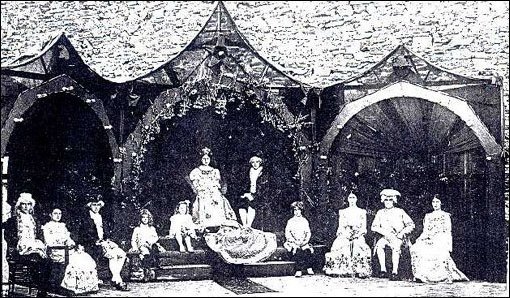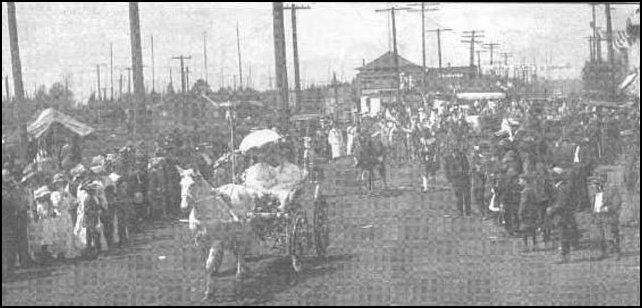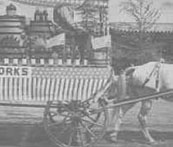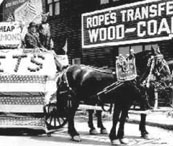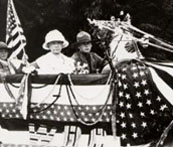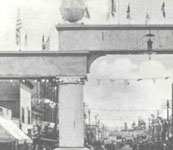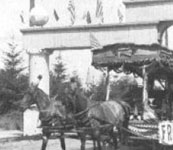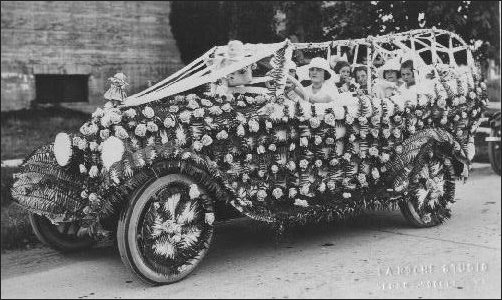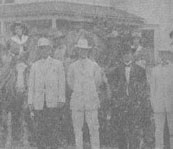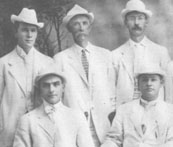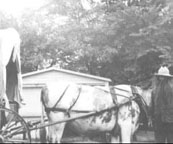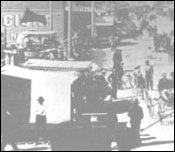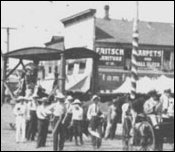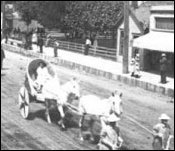Far left: The carnival committee of 1914 poses with competitors from the first full-fledged rodeo of the 4th of July that year. Behind them is the home of John Anderson — founder of Sedro-Woolley Iron Works, which still stands at the southeast corner of Puget and Ferry streets. The same 1939 Courier-Times referred to above supplied this caption with some of the names of the committee members in the white "ice cream" suits (from l. to r.): W.J. Thompson (the mayor — he died five weeks later in an auto wreck), Horace Condy (jeweler), Rev. Honor L. Wilhelm (the only one in the black suit), Paul Rhodius (druggist, the one time in history that he did not wear his black derby hat), H.H. Shrewsbury (mill and hardware owner), C.E. Bingham, Harry Devin (realtor), B.D. Vanderveer (saloon owner and Klondike miner), W.H. Curry (furniture store), and George Ragsdale (Skagit County Times editor.
Center: This photo is fondly known as the "Ice Cream Suit" committee. In the early days of the twentieth century, men wore these white-on-white suits from Memorial Day to Labor Day for special occasions. A special edition of the Courier-Times from September 1953 identifies the members of the 1907 4th of July carnival committee as (l. to r.): front row, Frank Herron (Grand Rapids Furniture); Homer Shrewsbury, genl chairman; Dave Donnelly (butcher and later postmaster); back row, Horace Condy; Bill Thompson (originally a cigar maker, he changed his name back to the original Scandinavian spelling of Thomsen and was bookkeeper of the Union Mercantile store, then city clerk until he retired in 1953), parade marshal; A. C. Campbell (baker); Paul Rhodius; George Ragsdale.
Right: The Territorial Daughters of Washington, Chapter 1, which formed in Sedro-Woolley in 1936, had this covered wagon restored in 1939 so they could ride in it on July 4 to celebrate the Golden Anniversary of Washington statehood and of the year that the railroad came to Sedro. Pioneer William Dunlop, one of the original four British bachelors, poses at the right.
|

 810 Central Ave.,
810 Central Ave., 